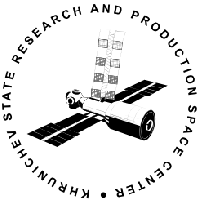Cosmos 1987, 1988 & 1989
Launch Success
Liftoff Time (GMT)
02:05:24
Tuesday January 10, 1989
Mission Details
Cosmos 1987 & 1988
The USSR took a long time to realize the importance of positioning systems. After launching the Zaliv and Parouss constellations, similar to the American Transit, the Soviets began the development of a new generation, the GLONASS, to be similar to the new American GPS. The first GLONASS satellite was launched in October 1982, and two more were launched into orbit once it was proven to work properly. Several slightly improved versions were then launched, Block IIA, IIB and IIV. In 1991, the USSR collapses, whereas the constellation finishes its phase I of deployment, composed of 14 satellites. The Soviets are then ahead of the American GPS program. Phase II, with 24 satellites, was reached in 1995. Because of the economic crisis that followed the fall of the USSR, Russia is unable to maintain these 24 satellites in orbit, their replacement is no longer assured. From 1996, GLONASS is no longer operational. In October 2000, there are only 6 functional satellites, out of the 18 necessary. To solve this problem, it was decided to develop GLONASS-M, with an increased life span. The first one is launched in 2003. The GLONASS satellites are positioned on elliptical orbits contained in three orbital planes inclined at 64.8°. To transmit their signal, the GLONASS satellites use a multiplexing FDMA (Frequency Division Multiple Access). The GLONASS satellites have a mass of 1413kg, which will allow them to be placed in orbit in clusters of three. The satellites are built around a cylindrical body, which has a length of 8.2m and a diameter of 1m. With the solar panels deployed, the satellites are 7.3m wide. GLONASS-M are designed around the same systems and subsystems as GLONASS. Their dimensions are the same, but their mass is very slightly increased to 1415kg. But the main advantage of GLONASS-M over their predecessors is their lifetime, seven years. They can be launched into orbit by clusters of three on Proton-M launchers.
Medium Earth Orbit
2 Payloads
2,830 kilograms
Cosmos 1989
Etalon are a Soviet / Russian family (Etalon-1, Etalon-2) of passive geodetic satellites dedicated to satellite laser ranging. Etalon-1 was the first geodynamic satellite launched by the former Soviet Union. The Etalon spacecraft were launched in 1989 in conjunction with a pair of GLObal'naya NAvigatisionnay Sputnikovaya Sistema (GLONASS) satellites. The mission objectives were to determine a high accuracy terrestrial reference frame and earth rotation parameters; to improve the gravity field, and to improve the gravitational constant. The Etalon satellites are passive satellites. The only instrumentation is the retro-reflector array which consists of 2 different type of cube corners. RetroReflector Array (RRA) Characteristics: Each Etalon satellite is a 1.294 m diameter sphere. The diameter of the sphere touching the corner cube reflector (CCR) faces is 1284 mm (the difference does not cause any masking). There are a total of 2140 fused-quartz CCR's (304 arrays 7 CCR's each and 2 arrays 6 CCR's each) plus 6 germanium CCR's. Each CCR has the same dimensions and is made of the same material (fused quartz). The same CCRs were used on GLONASS.
Medium Earth Orbit
1 Payload
1,415 kilograms
Rocket


Manufacturer
KhrunichevRocket
Height: 57.64m
Payload to Orbit
LEO: 19,000 kg
GTO: 2,400 kg
Liftoff Thrust
9,548 Kilonewtons
Fairing
Diameter: 4.35m
Height: 10.4m
Stages
4
Launch Site
Stats
Proton-K
168th
Mission
1st
Mission of 1989
Khrunichev State Research and Production Space Center
2260th
Mission
1st
Mission of 1989
1989
1st
Orbital launch attempt